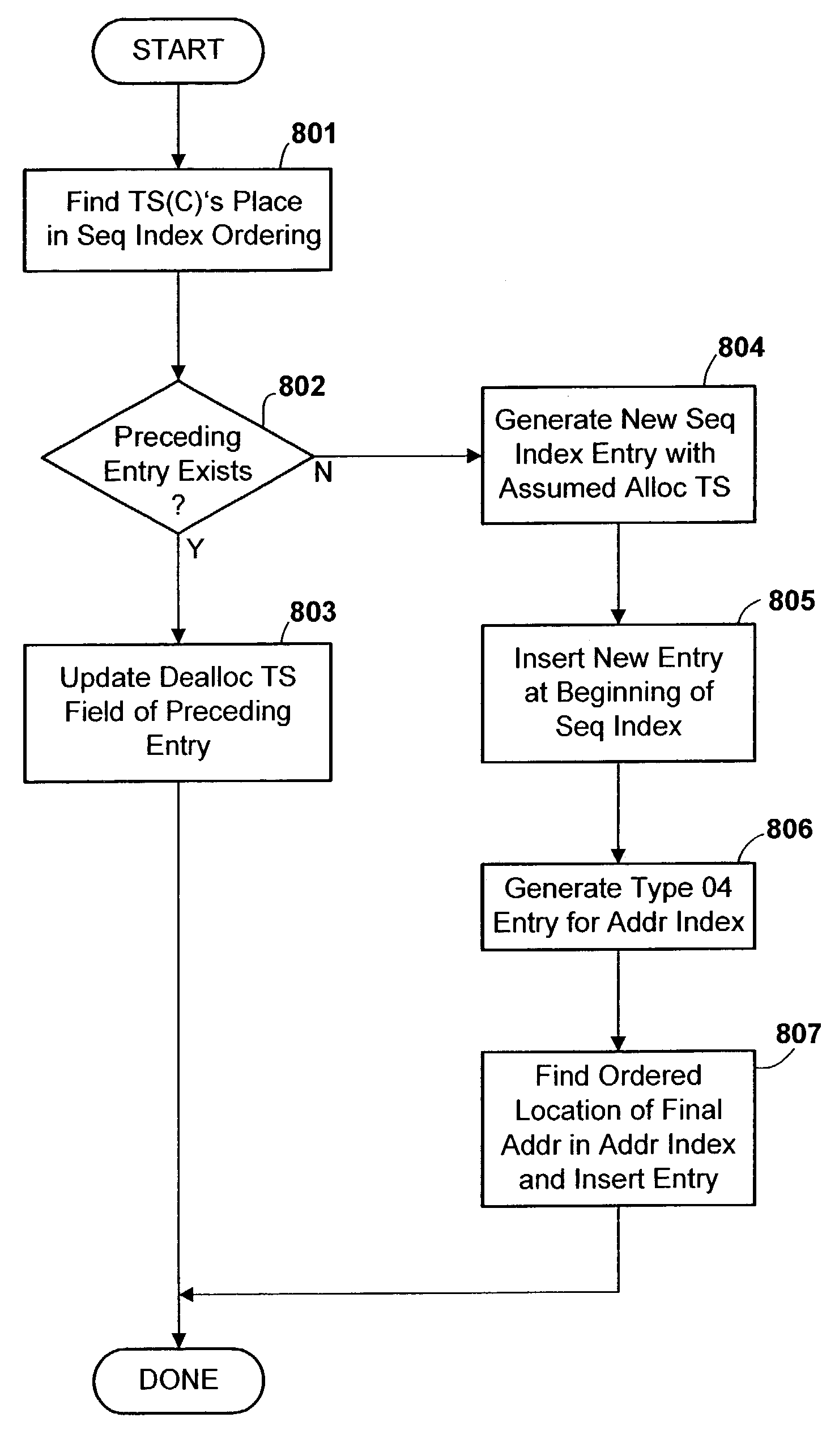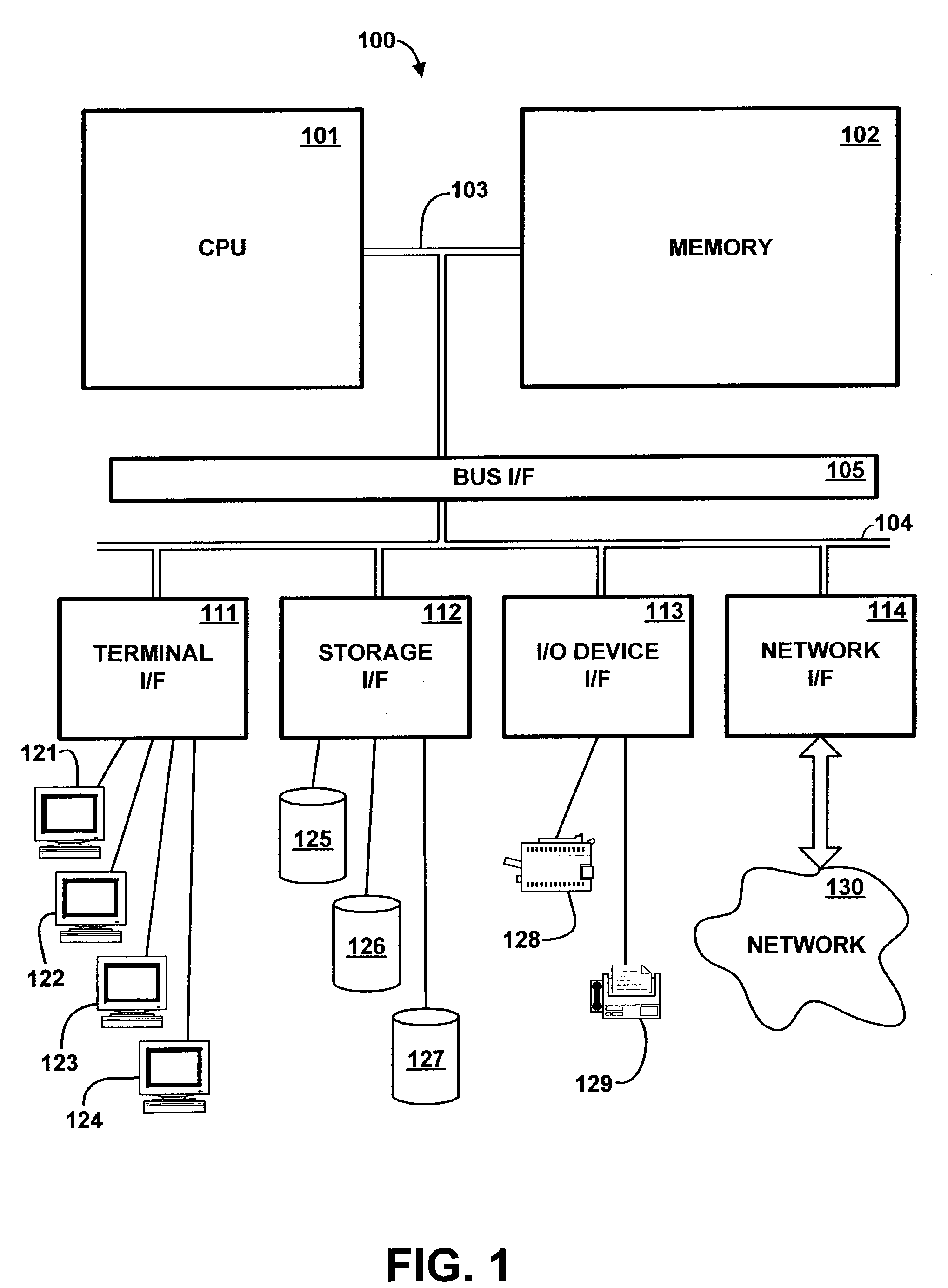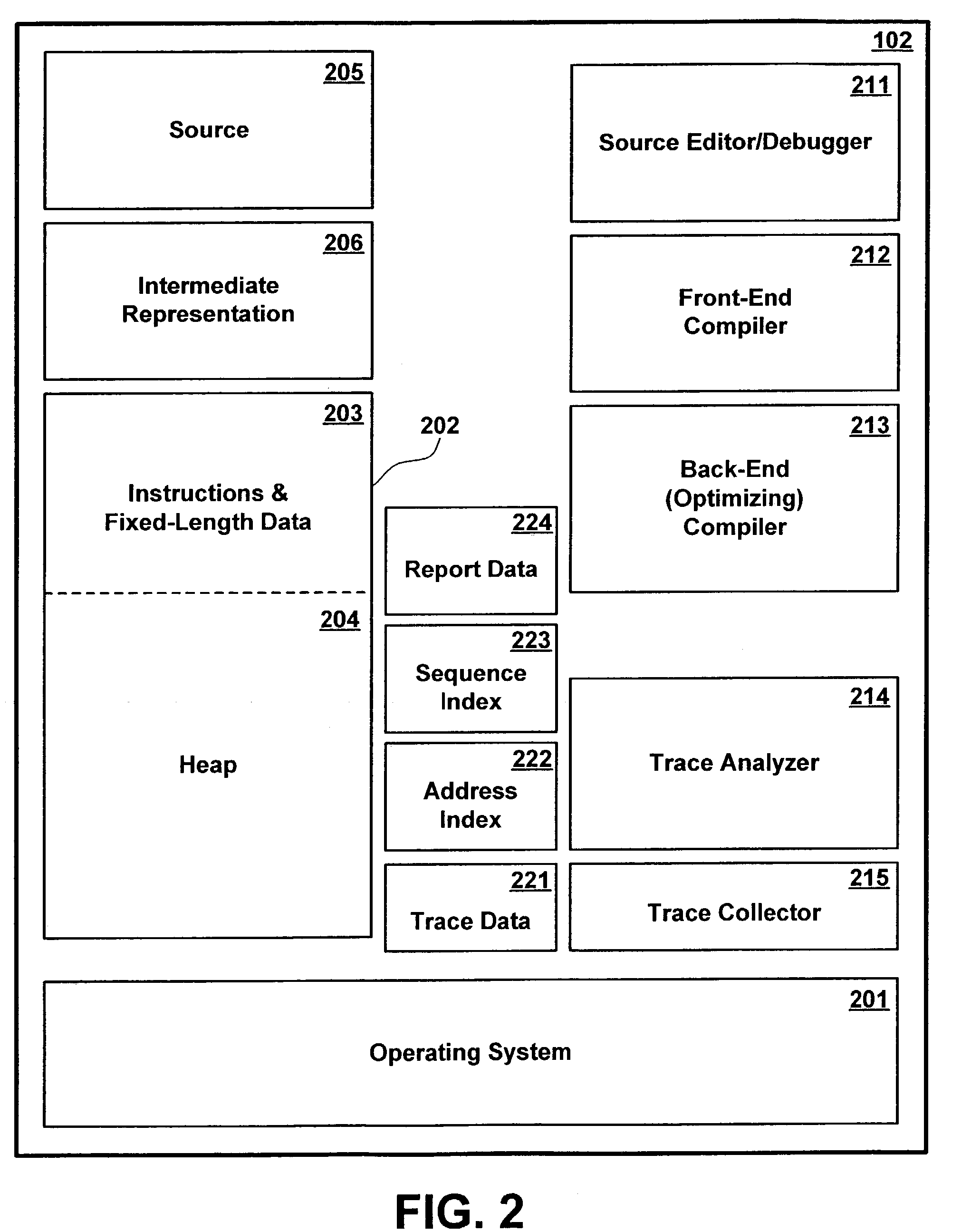Method and apparatus for resolving memory allocation trace data in a computer system
- Summary
- Abstract
- Description
- Claims
- Application Information
AI Technical Summary
Benefits of technology
Problems solved by technology
Method used
Image
Examples
Embodiment Construction
Development Environment Overview
[0026]The present invention relates to the resolution of memory allocation trace data collected during execution of a computer program under simulated or actual conditions. In general, memory allocation data is used as part of a program development process, to identify errors in the flow of program execution, or to understand the effect of certain code procedures or instructions on the overall performance of the program. Such data might be used to provide feedback to a programmer, so that the programmer might correct defects or write code in a more efficient manner. It also might be used, in some circumstances, as input to an optimizing compiler, which would have the capability to employ alternative coding techniques to avoid performance bottlenecks arising from certain memory allocations. However, the present invention is not necessarily limited to these particular uses, and memory allocation data could conceivably be used for other purposes. For exa...
PUM
 Login to View More
Login to View More Abstract
Description
Claims
Application Information
 Login to View More
Login to View More - R&D
- Intellectual Property
- Life Sciences
- Materials
- Tech Scout
- Unparalleled Data Quality
- Higher Quality Content
- 60% Fewer Hallucinations
Browse by: Latest US Patents, China's latest patents, Technical Efficacy Thesaurus, Application Domain, Technology Topic, Popular Technical Reports.
© 2025 PatSnap. All rights reserved.Legal|Privacy policy|Modern Slavery Act Transparency Statement|Sitemap|About US| Contact US: help@patsnap.com



